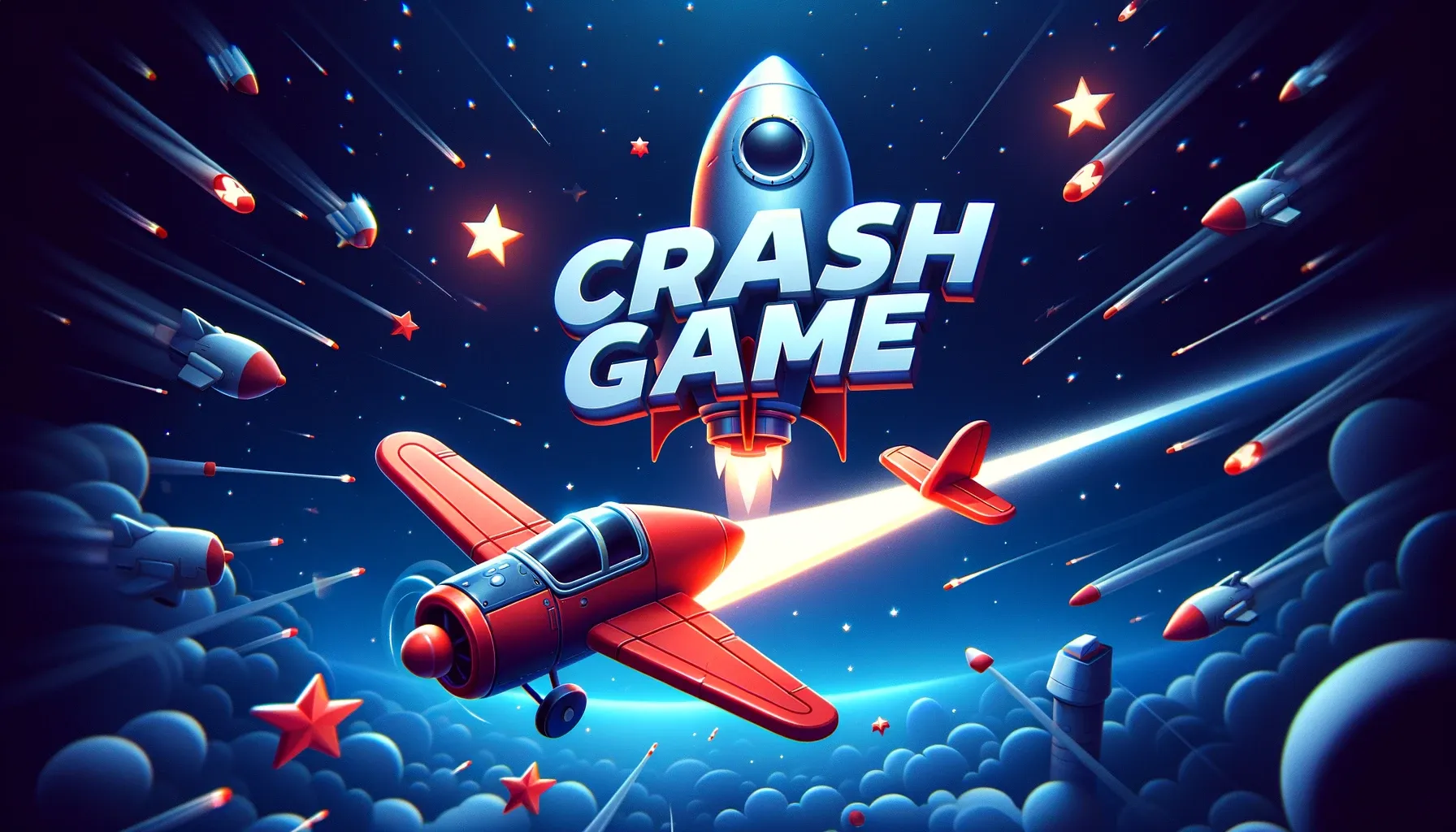Introduction
In the ever-evolving world of gaming, the development process behind the creation of thrilling and captivating experiences has become a topic of fascination for both industry professionals and enthusiasts alike. The crash game phenomenon, in particular, has captured the attention of gamers and developers alike, with its unique blend of high-stakes excitement and strategic gameplay. This comprehensive guide aims to delve into the intricacies of crash game development, exploring the key aspects, challenges, and best practices that shape the creation of these captivating digital experiences.
Mastering the Fundamentals of Crash Game Desig

Understanding the Core Mechanics
Crash games, at their core, are built upon a simple yet thrilling premise: players must withdraw their bets before a continuously increasing multiplier “crashes,” signaling the end of the round. This delicate balance between risk and reward is what makes these games so alluring to players. Developers must carefully consider the underlying mechanics that drive the gameplay, ensuring a seamless and engaging experience.
The Multiplier Mechanic
- The crucial element that drives the tension and excitement in crash games is the constantly increasing multiplier.
- Developers must meticulously design the multiplier’s behavior, taking into account factors such as the rate of increase, the maximum achievable value, and the unpredictable nature of the “crash” point.
- Ensuring a fair and transparent system for determining the crash point is paramount to maintaining player trust and creating a sense of fairness.
Bet Placement and Withdrawal
- The ability for players to withdraw their bets at any point during the round is a fundamental aspect of crash game design.
- Developers must consider the user interface and the ease of bet placement and withdrawal, as well as the timing mechanics to ensure a smooth and responsive gameplay experience.
- Implementing intuitive controls and minimizing latency are crucial in creating a seamless user experience.
Randomness and Unpredictability
- Crash games thrive on the element of unpredictability, as players attempt to anticipate the moment when the multiplier will “crash.”
- Developers must carefully balance the level of randomness and unpredictability in the game, ensuring that it feels fair and engaging, without becoming overly unpredictable or overwhelming.
- Implementing robust random number generation (RNG) algorithms and mechanisms to maintain the integrity of the game is essential.
Designing Engaging UI and UX

The visual and interactive elements of a crash game play a crucial role in captivating players and creating a memorable experience.
User Interface (UI) Design
- The crash game’s user interface must be clean, intuitive, and visually appealing, allowing players to easily access and understand the game’s mechanics.
- Developers should prioritize the placement and visibility of key information, such as the current multiplier, bet amounts, and player balance.
- Incorporating intuitive controls for bet placement and withdrawal, as well as clear feedback on player actions, is essential.
User Experience (UX) Optimization
- Ensuring a smooth and responsive user experience is paramount in crash game development.
- Developers should optimize for low latency and seamless transitions between game states, creating a sense of immediacy and control for the player.
- Incorporating features that enhance the overall engagement and immersion, such as visual effects, sound design, and interactive elements, can significantly improve the player experience.
Responsive Design and Cross-Platform Compatibility
- Crash games should be designed with a responsive approach, ensuring a consistent and optimized experience across various devices and screen sizes.
- Developers must consider the unique input methods and constraints of different platforms, such as desktop, mobile, and web, and adapt the game’s design accordingly.
- Maintaining a cohesive and seamless user experience across multiple platforms is crucial for expanding the game’s reach and accessibility.
Incorporating Engaging Game Modes and Variations
To keep players engaged and interested, crash game developers should explore diverse game modes and variations that add depth and replayability to the core experience.
Classic Crash Mode
- The traditional crash game mode, where players must withdraw their bets before the multiplier “crashes,” remains a cornerstone of the genre.
- Developers can experiment with different variations, such as adjusting the multiplier rate, implementing special events or bonuses, or introducing different win conditions.
Multiplayer and Tournament Modes
- Incorporating multiplayer functionality, where players compete against each other in real-time, can significantly enhance the social and competitive aspects of the game.
- Tournament modes, with leaderboards and prizes, can foster a sense of community and drive player engagement and retention.
- Developers must consider the technical and design challenges of implementing secure and synchronized multiplayer experiences.
Bonus and Side Activities
- Integrating bonus rounds, mini-games, or side activities can provide players with additional ways to engage with the game and earn rewards.
- These supplementary features can help break up the core gameplay loop and offer a more varied and dynamic experience.
- Developers should carefully balance the relationship between the main crash game and the bonus/side activities, ensuring they complement each other and enhance the overall experience.
Progression Systems and Rewards
- Implementing progressive systems, such as leveling up, unlocking new features, or earning in-game currency, can motivate players to continue engaging with the game.
- Carefully designed reward structures, including bonuses, achievements, and leaderboard recognition, can foster a sense of accomplishment and encourage players to keep playing.
- Developers should consider the psychological and motivational aspects of progression systems to ensure they align with the game’s overall design and player expectations.
Ensuring Game Balance and Fairness
In the realm of crash game development, maintaining a delicate balance between player experience, house edge, and fairness is of utmost importance.
House Edge and Payout Structure
- Developers must carefully calculate and implement the appropriate house edge, ensuring a sustainable and profitable business model while still providing players with a fair and engaging experience.
- The payout structure, which determines the multiplier at which players can cash out their bets, is a critical component in achieving this balance.
- Transparency and clear communication around the house edge and payout structure are crucial for building player trust and setting appropriate expectations.
Random Number Generation (RNG) and Integrity
- Robust and transparent random number generation (RNG) systems are essential for ensuring the fairness and integrity of crash games.
- Developers should implement secure and verifiable RNG mechanisms, potentially incorporating blockchain technology or other cryptographic techniques, to demonstrate the game’s fairness and transparency.
- Regular audits and third-party verification of the RNG system can further reinforce player trust and confidence in the game’s integrity.
Player Protection Measures
- Implementing responsible gaming features, such as bet limits, time limits, and self-exclusion options, can help protect players and promote a healthy gaming environment.
- Developers should also consider incorporating mechanisms to detect and prevent potential cheating or collusion attempts, ensuring a level playing field for all participants.
- Providing clear and accessible information about the game’s rules, odds, and responsible gambling resources can empower players to make informed decisions.
Optimizing for Performance and Scalability

As crash games gain popularity and attract a growing player base, the ability to handle high traffic and maintain a seamless user experience becomes a critical aspect of development.
Infrastructure and Server Architecture
- Developers must design a robust and scalable server infrastructure to support the game’s operations, including handling real-time data processing, player transactions, and event synchronization.
- Implementing appropriate load-balancing and failover mechanisms can ensure the game’s availability and resilience in the face of sudden spikes in player activity.
Client-Side Optimization
- Optimizing the client-side performance, particularly on mobile devices, is crucial for providing a smooth and responsive gameplay experience.
- Techniques such as efficient asset management, code optimization, and leveraging hardware-accelerated rendering can significantly improve the game’s performance and reduce latency.
Scalability and Capacity Planning
- Anticipating and planning for future growth is essential in crash game development, as the player base and transaction volumes can fluctuate significantly.
- Developers should implement scalable architectures and processes that can easily adapt to changing demand, ensuring the game’s ability to handle increased player activity without compromising performance or stability.
Monitoring and Optimization Strategies
- Implementing comprehensive monitoring and analytics tools can provide valuable insights into the game’s performance, player behavior, and system health.
- Continuously analyzing and optimizing the game’s infrastructure, server configurations, and client-side code can help maintain a high-performing and responsive crash game experience.
Driving Player Engagement and Retention
In the competitive landscape of the gaming industry, retaining players and fostering long-term engagement is a crucial challenge for crash game developers.
User Acquisition and Onboarding
- Implementing effective user acquisition strategies, such as targeted advertising, referral programs, and cross-promotion, can help attract new players to the crash game.
- Streamlining the onboarding process and providing clear tutorials or guided introductions can help new players quickly understand the game’s mechanics and start engaging with the experience.
Retention and Engagement Strategies
- Developing a comprehensive player retention strategy, which may include features like in-game rewards, progress tracking, and social interaction, can help keep players invested and coming back to the game.
- Regularly introducing new content, game modes, or special events can help maintain the game’s freshness and provide players with a sense of ongoing discovery and excitement.
Community Building and Live Operations
- Fostering a strong and engaged community around the crash game can significantly contribute to player retention and long-term success.
- Developers can leverage social media, forums, or in-game communication tools to facilitate player interaction, share updates, and gather feedback.
- Implementing live operations, such as seasonal events, limited-time promotions, or community-driven initiatives, can further strengthen the bond between the game and its players.
Leveraging Data-Driven Insights
- Collecting and analyzing player data, such as engagement metrics, user behavior patterns, and session duration, can provide valuable insights to inform ongoing game development and optimization.
- Utilizing these data-driven insights can help developers make informed decisions about feature prioritization, content updates, and player retention strategies.
Conclusion
The crash game development landscape is a dynamic and evolving space, where developers must navigate a delicate balance between mechanics, design, and player engagement. By mastering the fundamentals, incorporating engaging game modes, ensuring fairness and balance, optimizing for performance, and driving player retention, crash game developers can create captivating digital experiences that captivate and enthrall players. This comprehensive guide has explored the key aspects of crash game development, equipping developers with the knowledge and strategies to thrive in this exciting and ever-changing industry.



